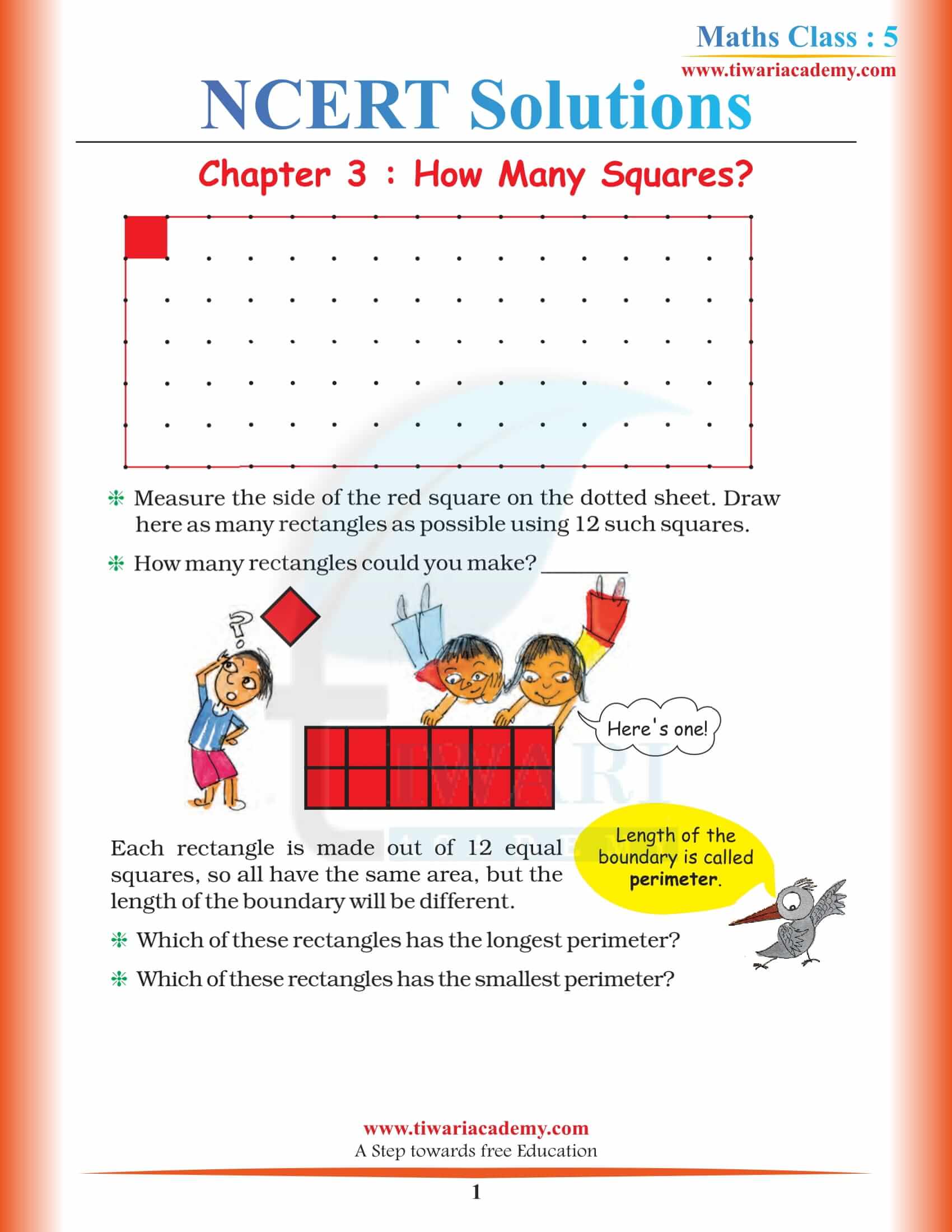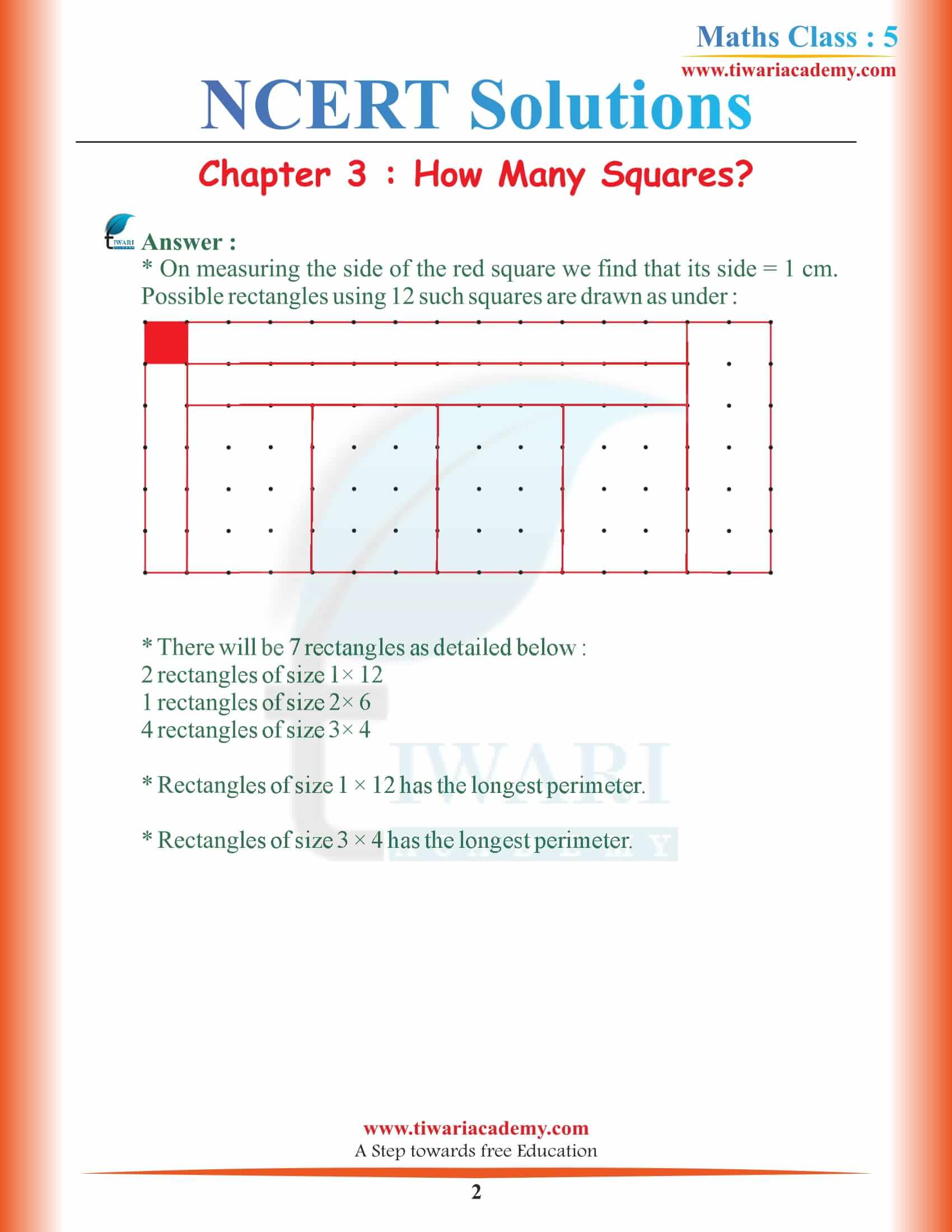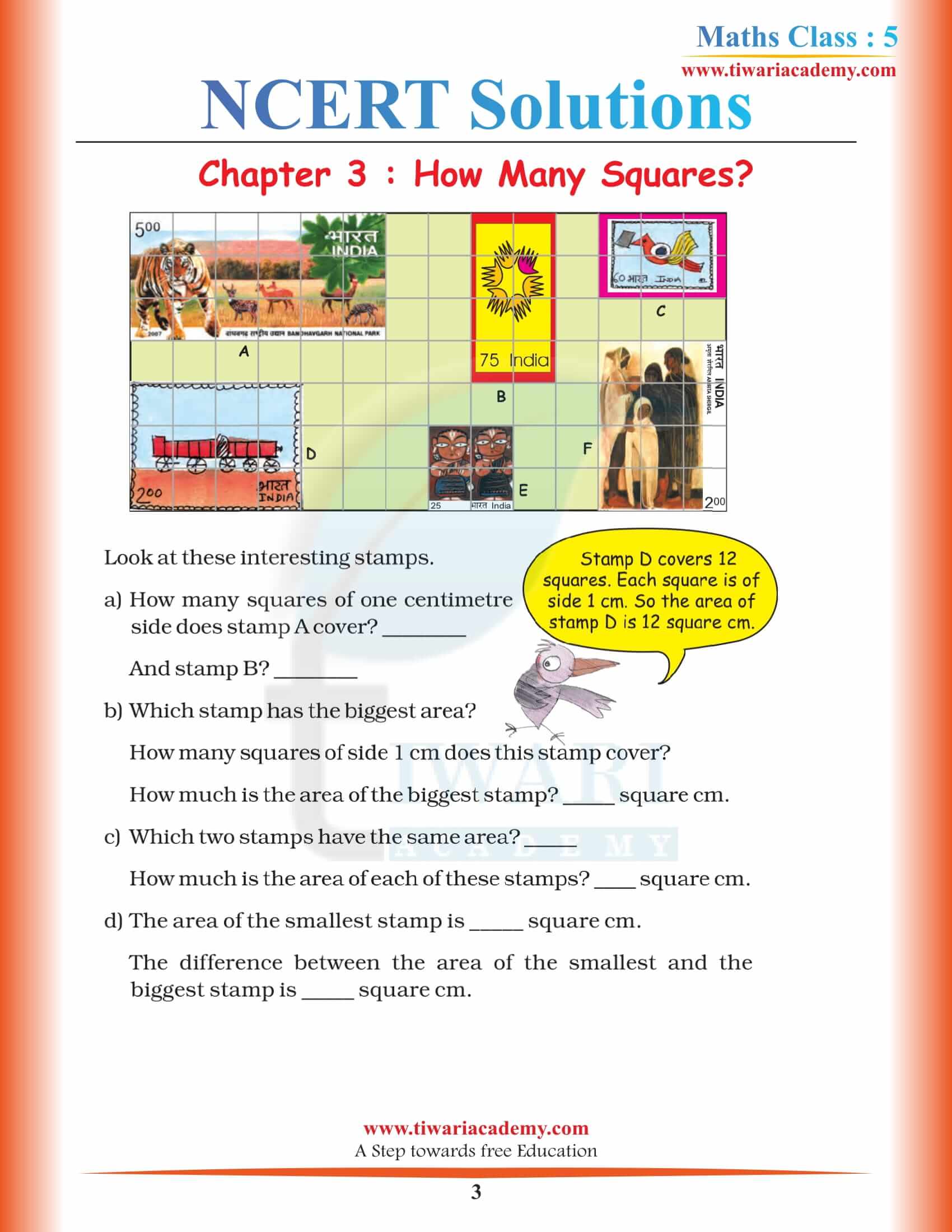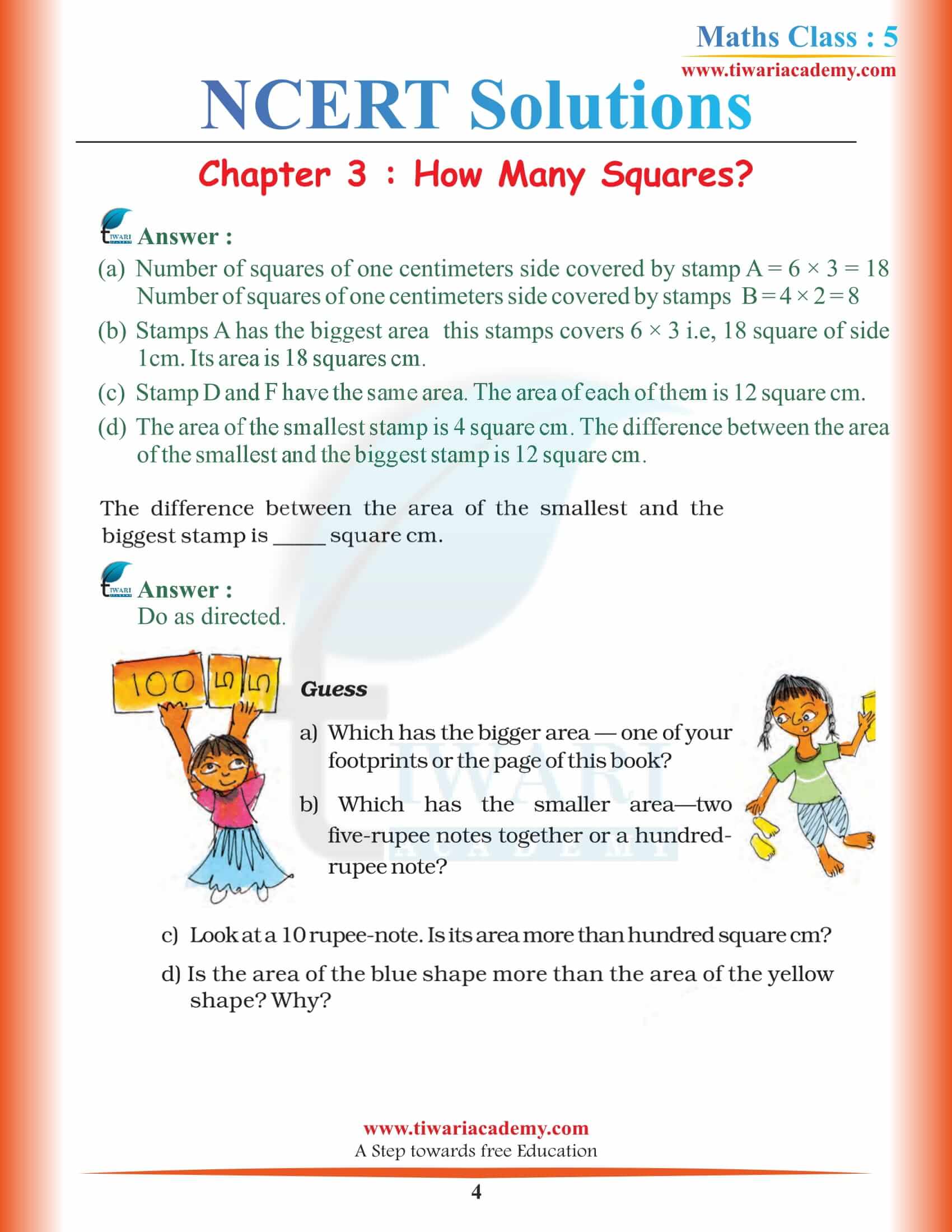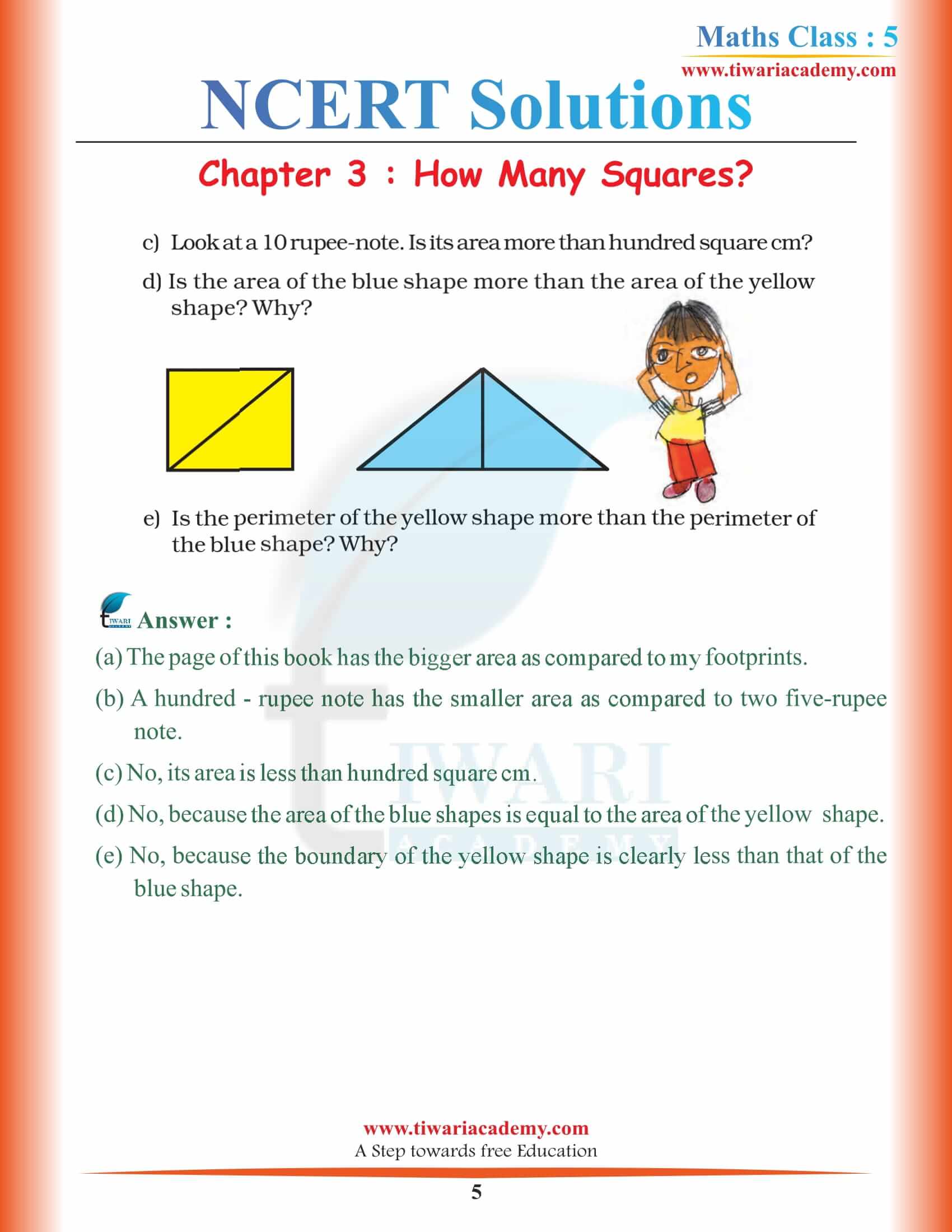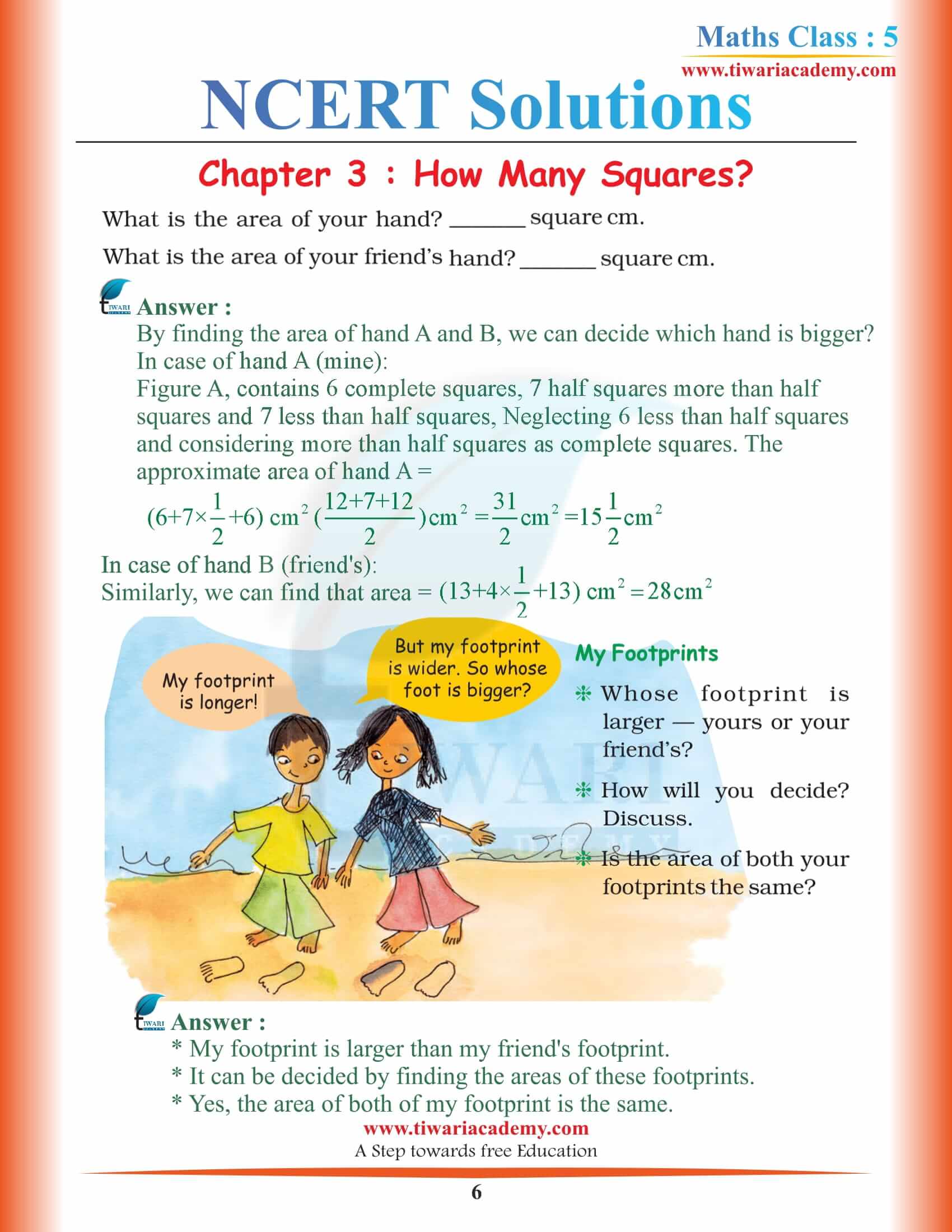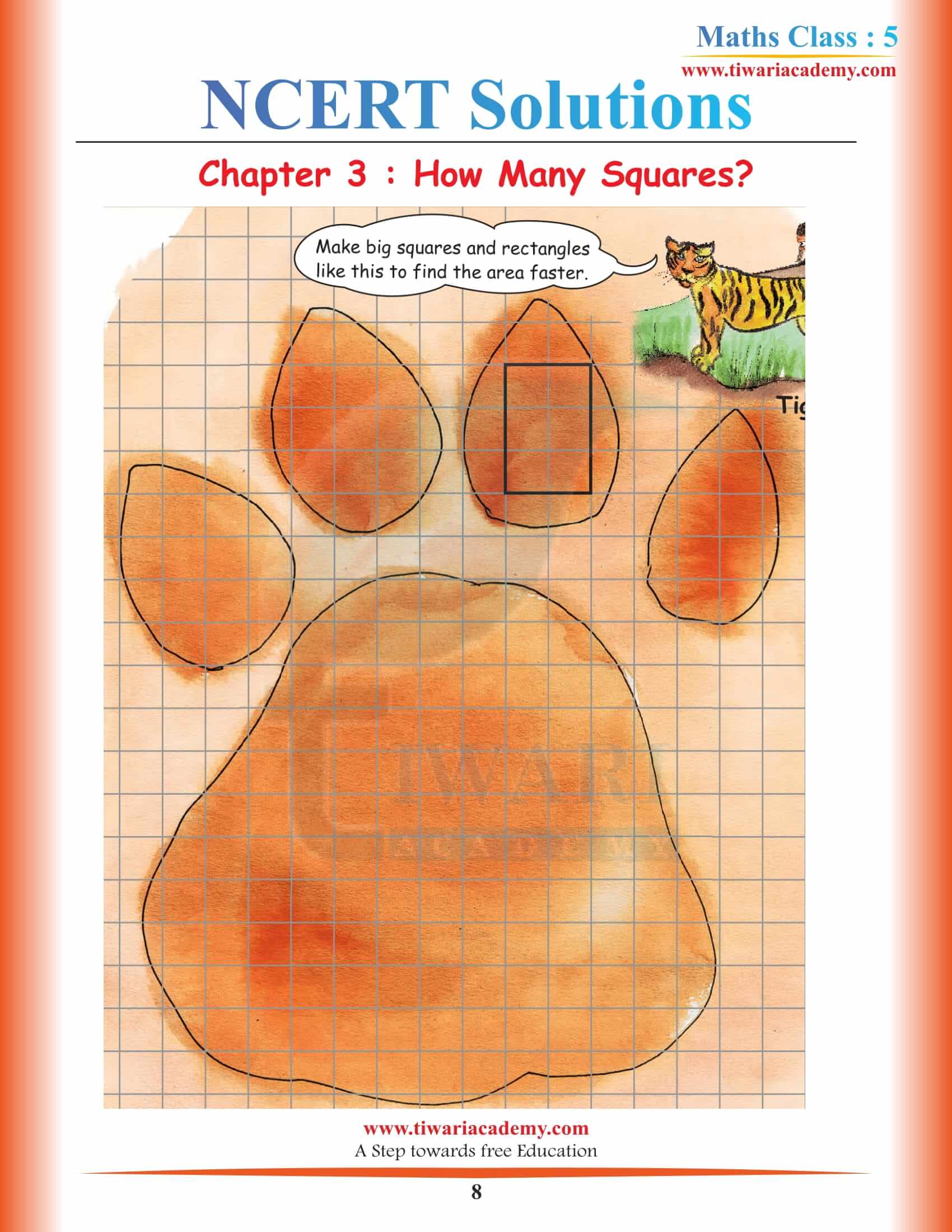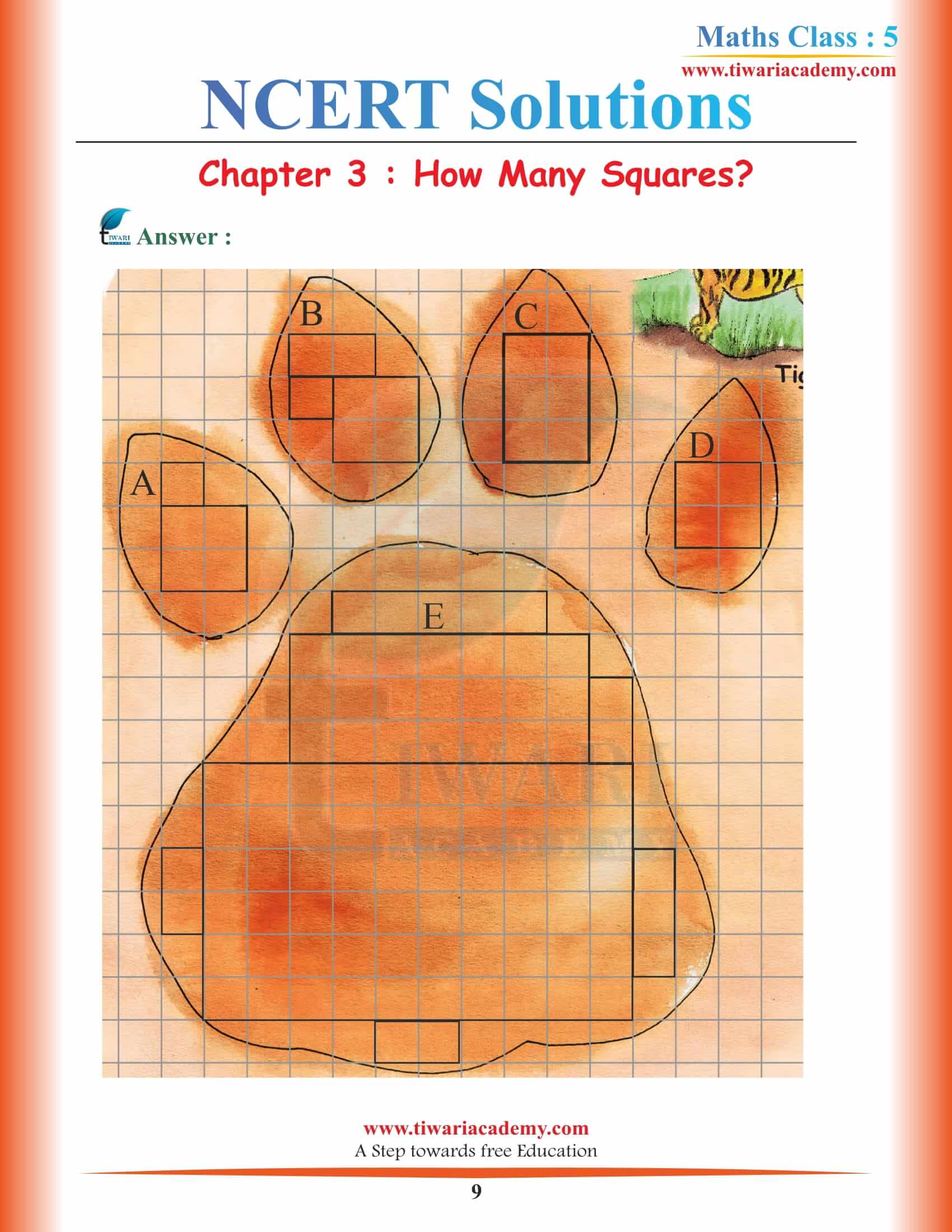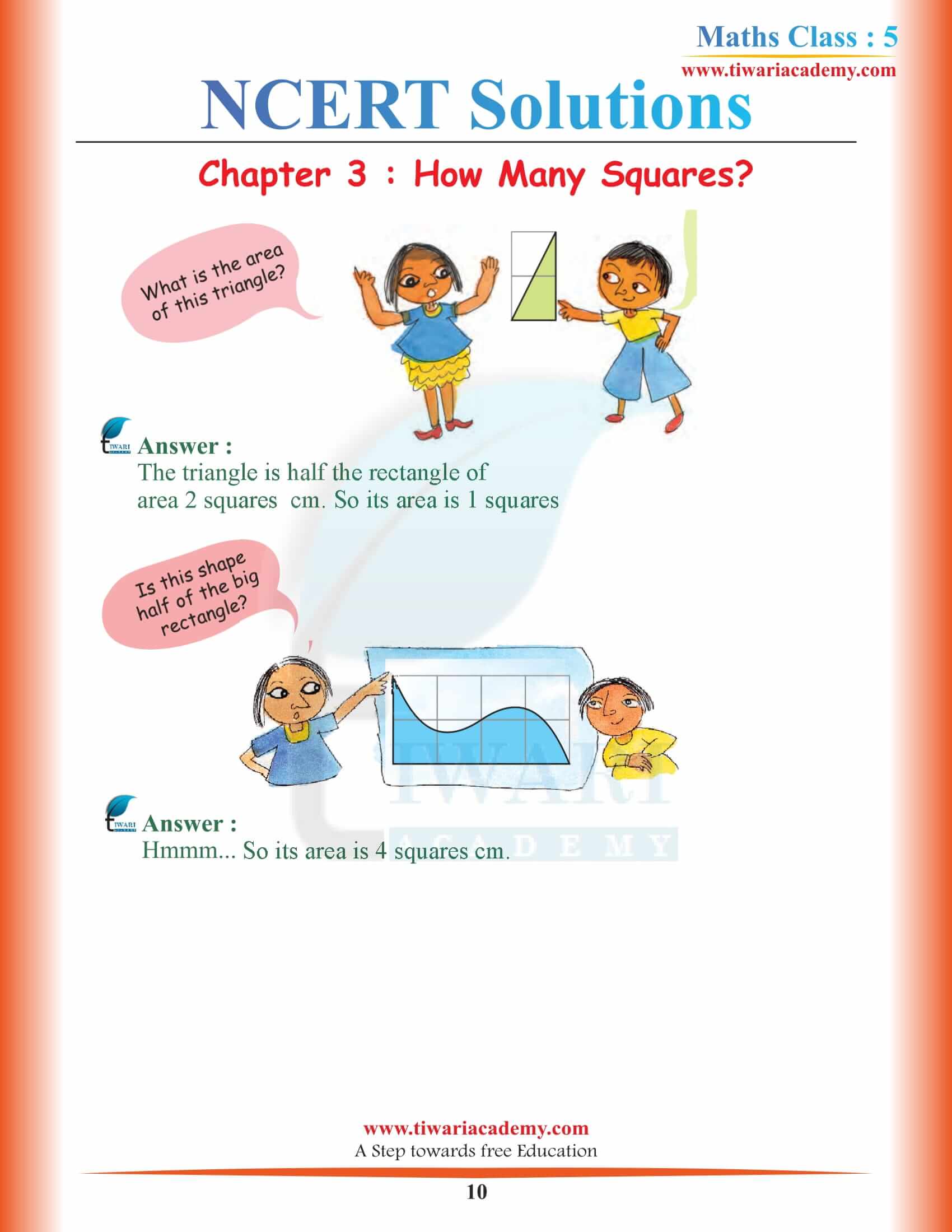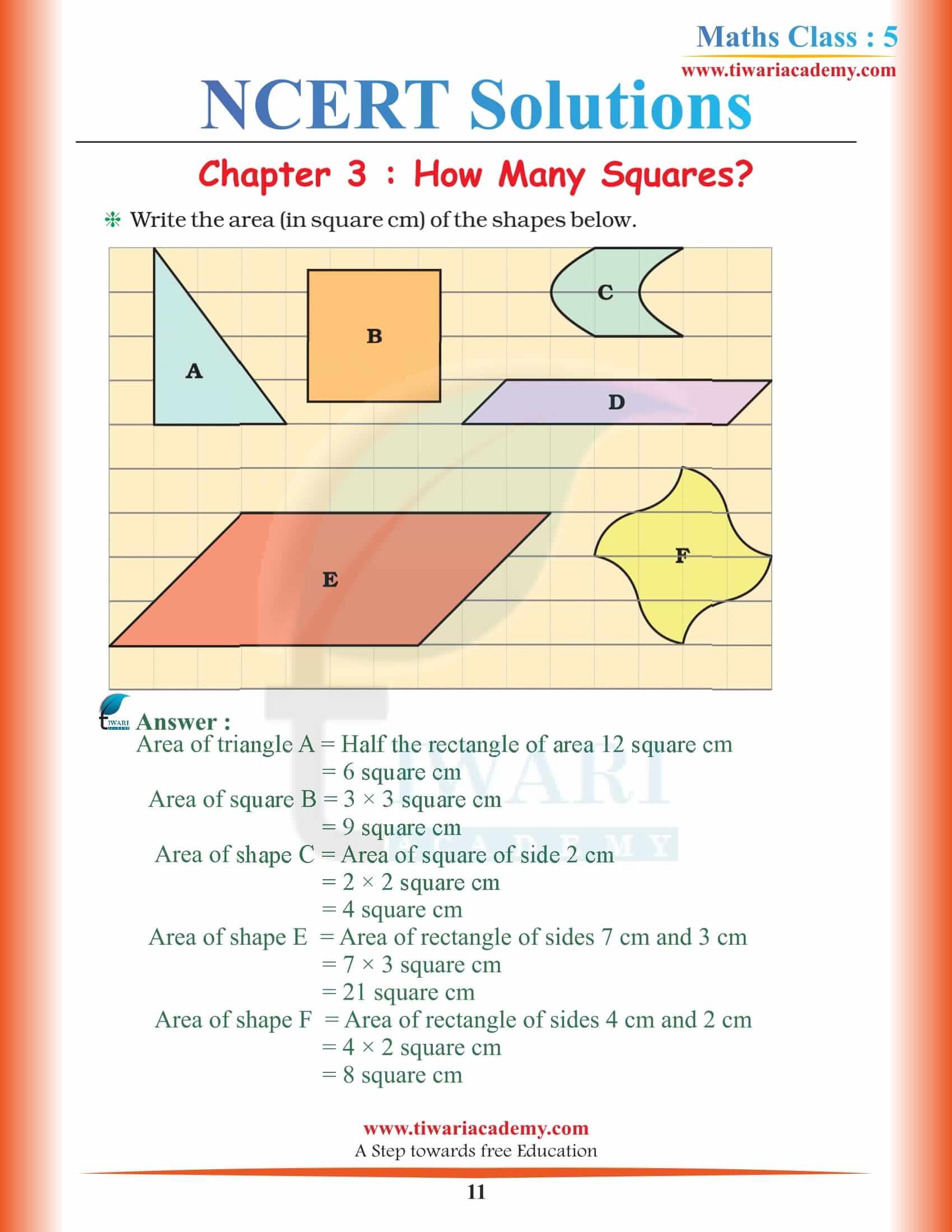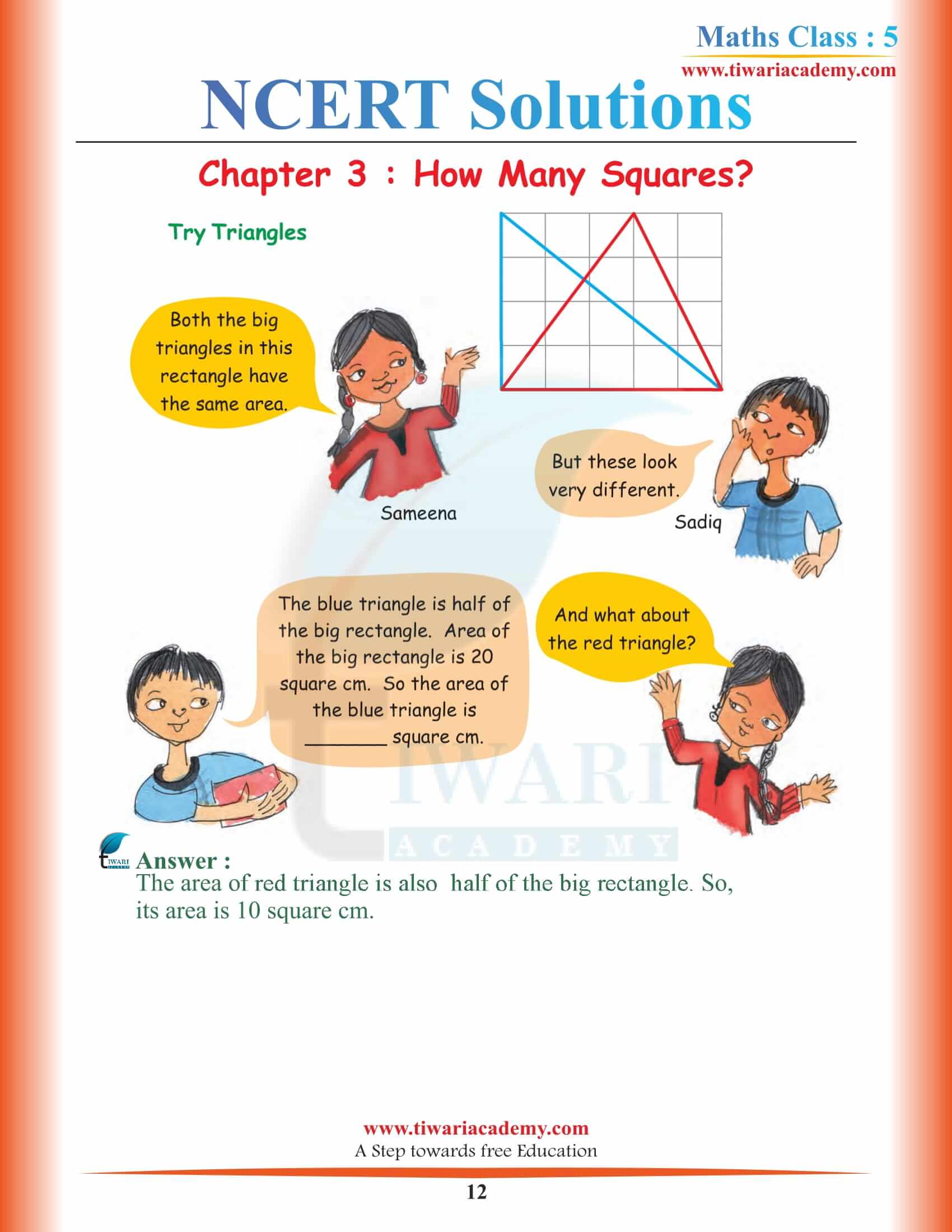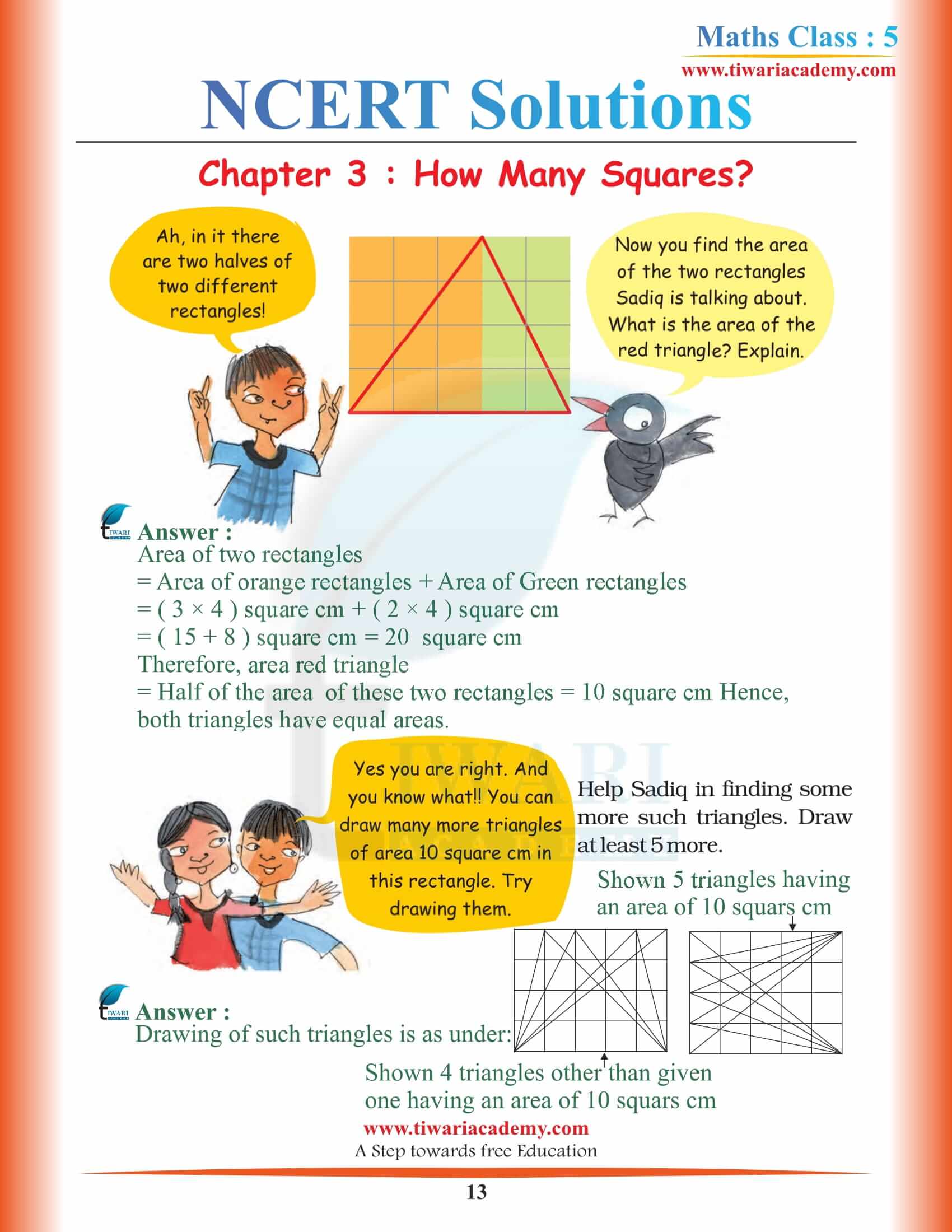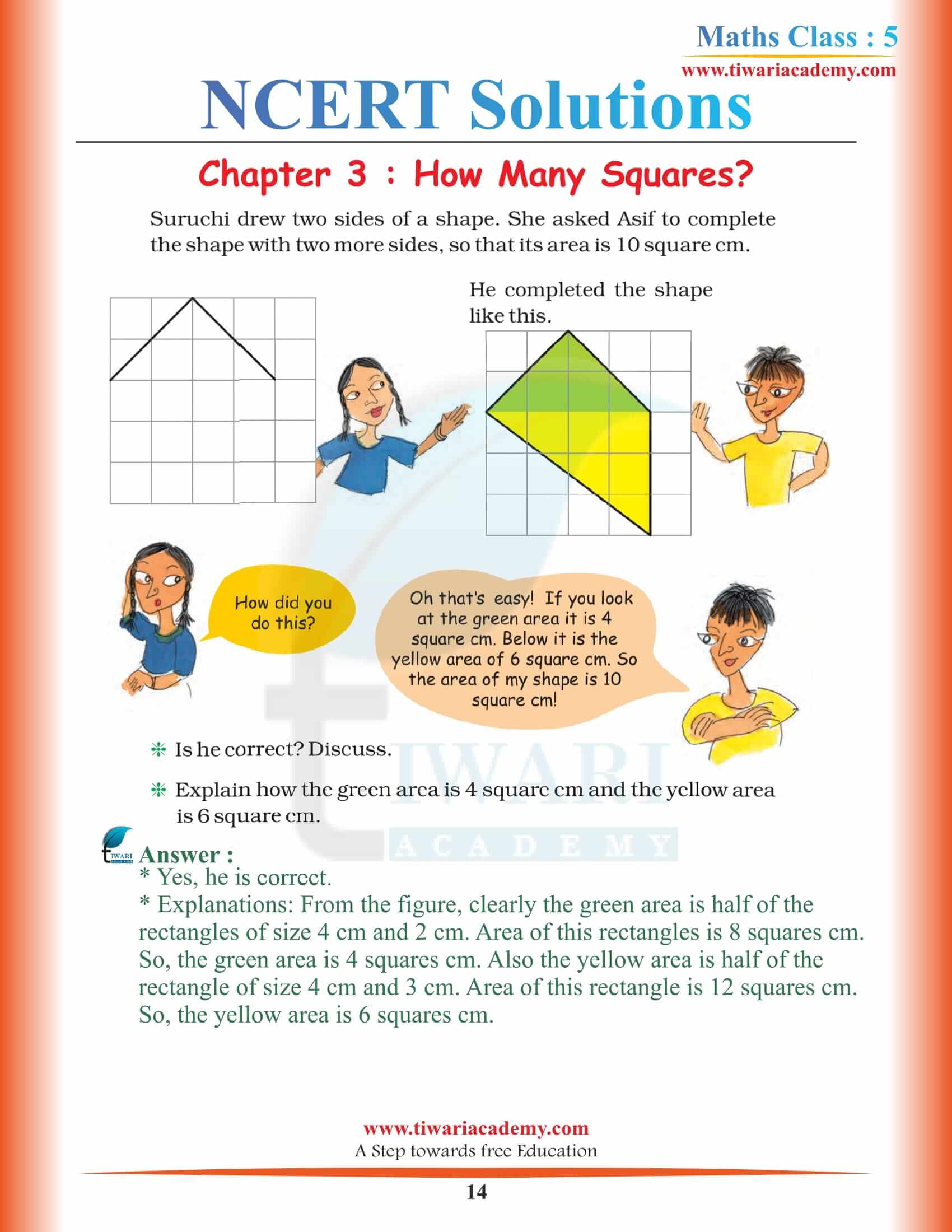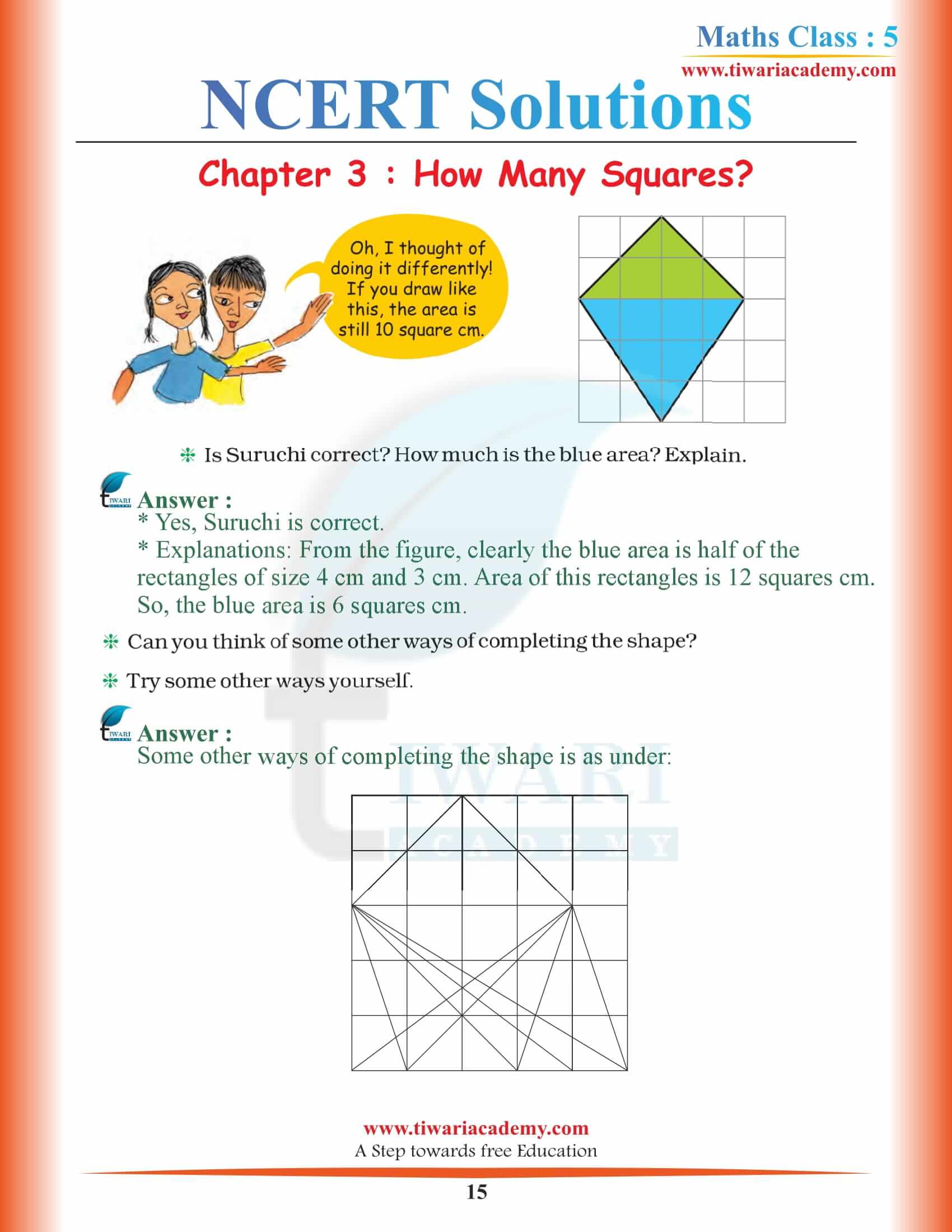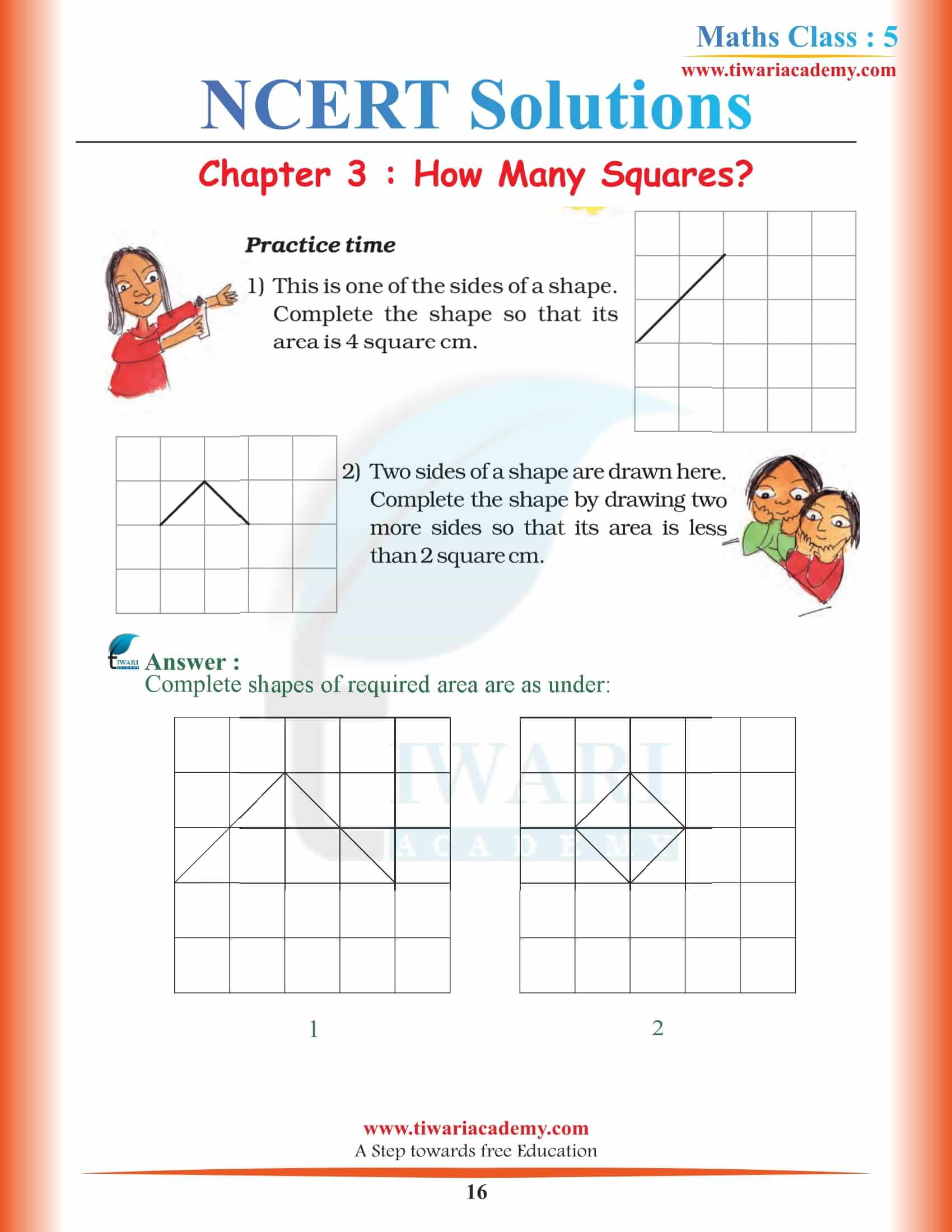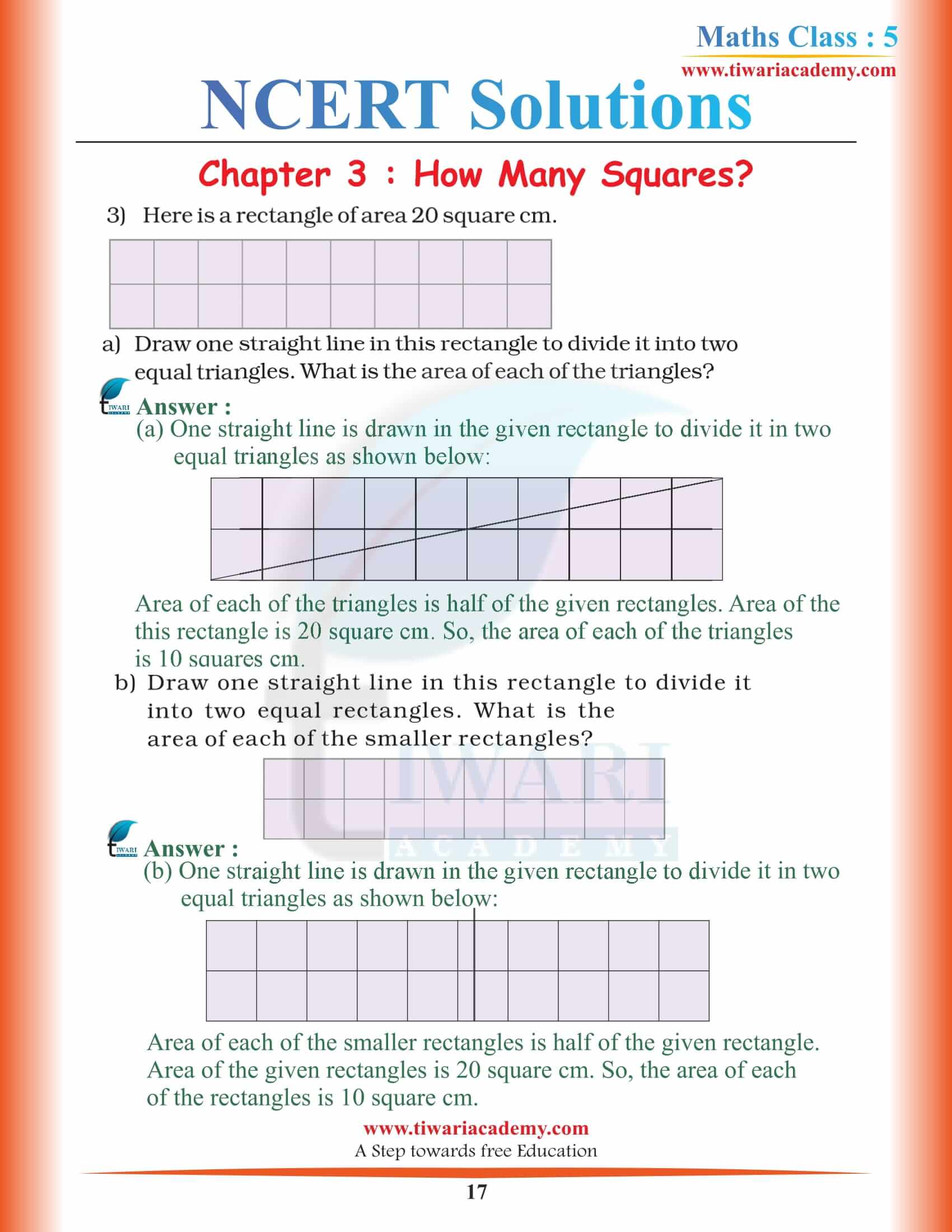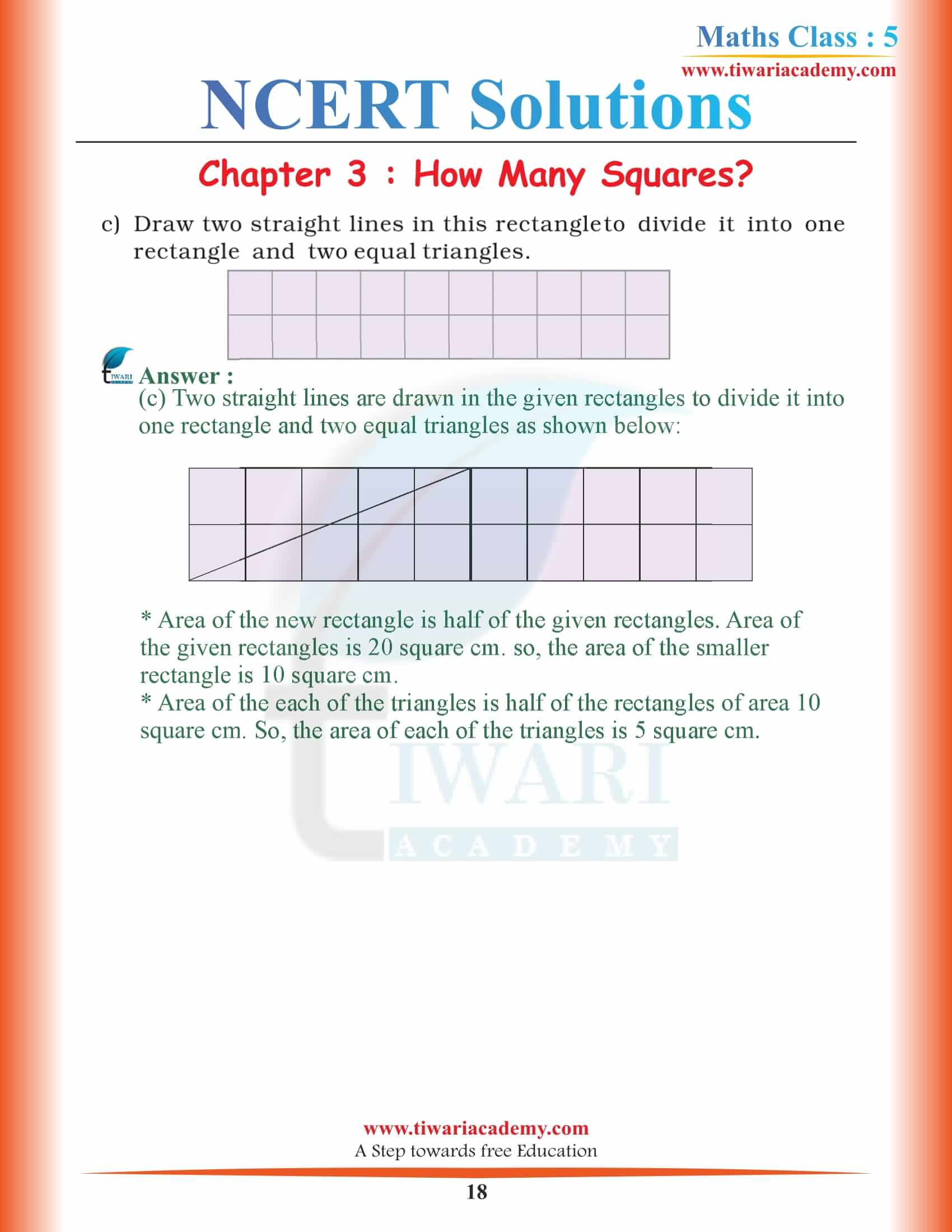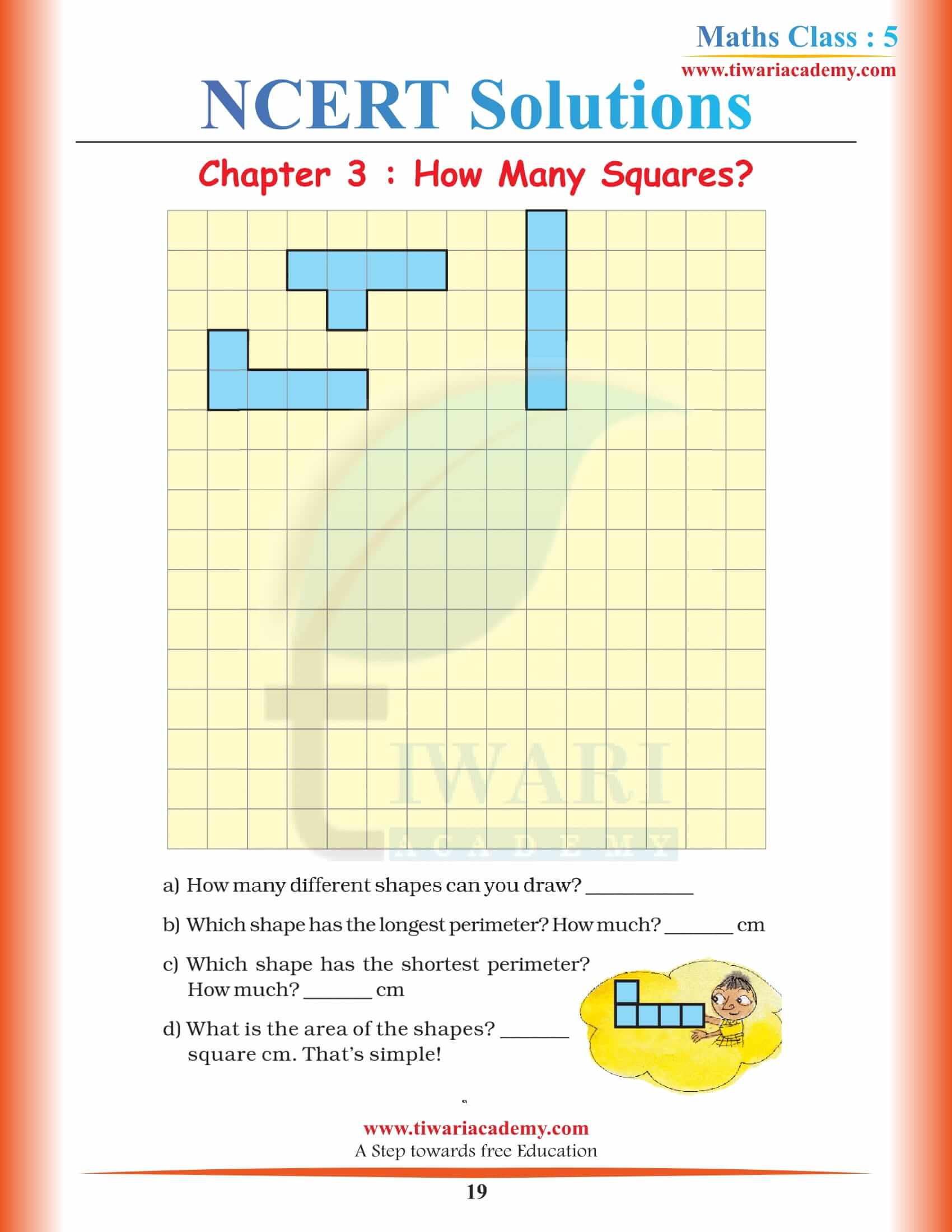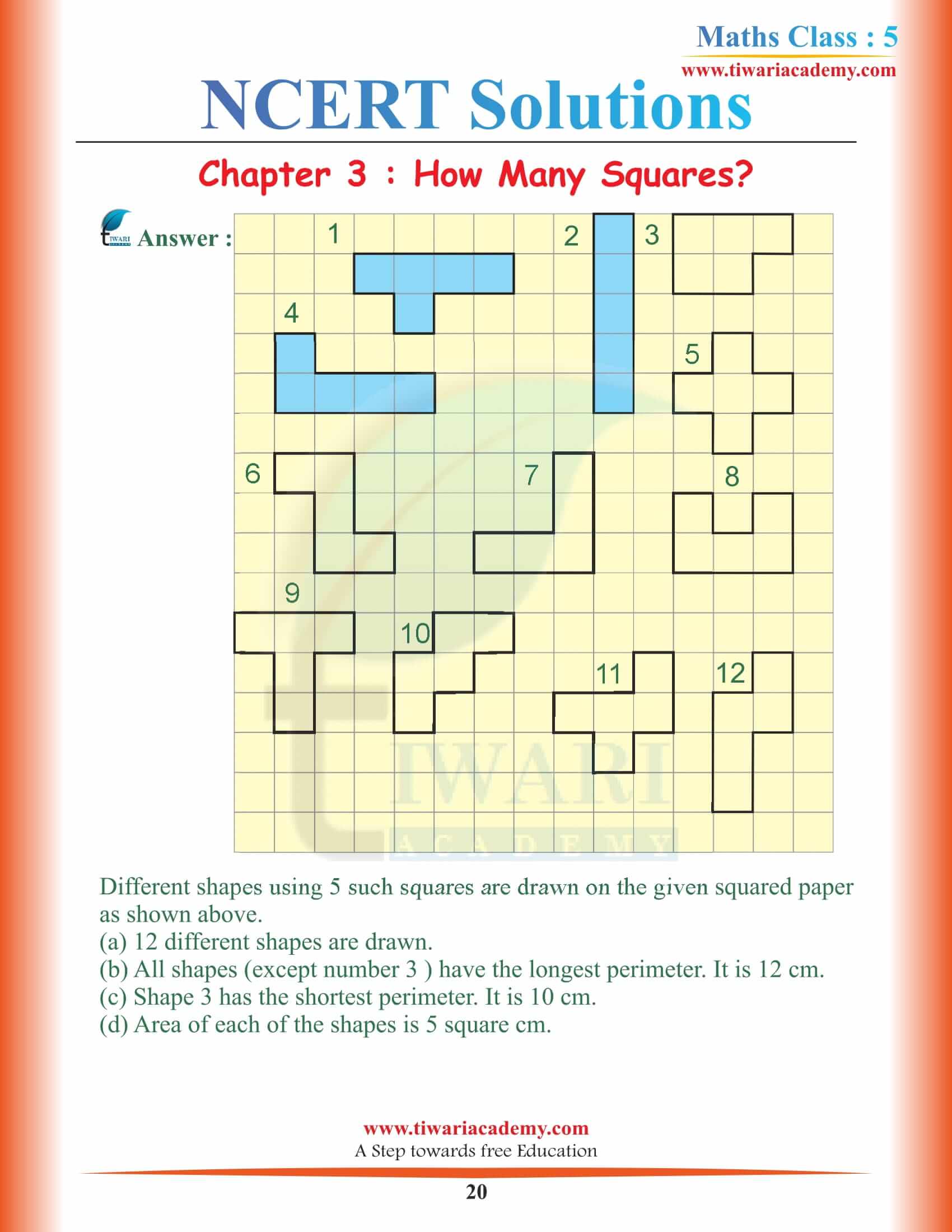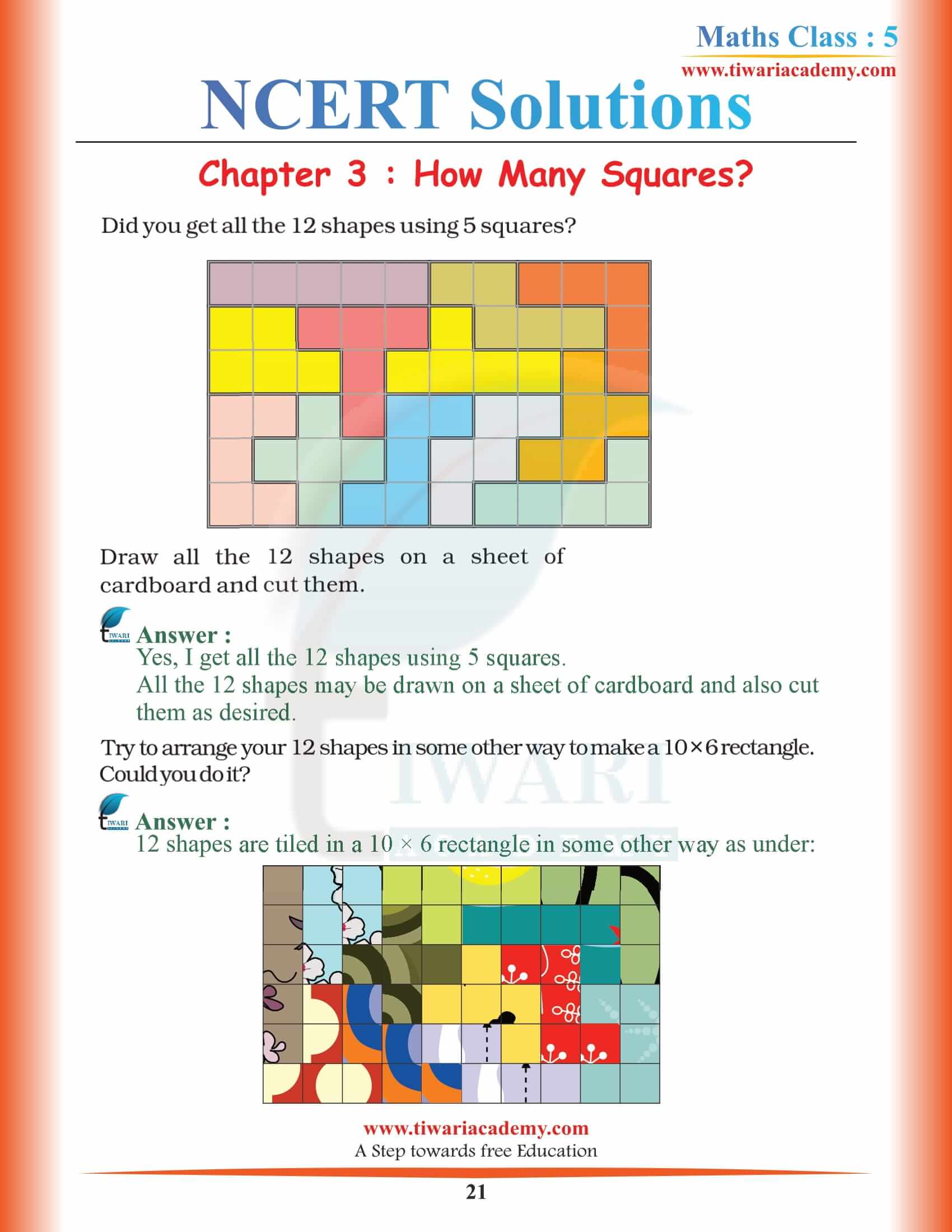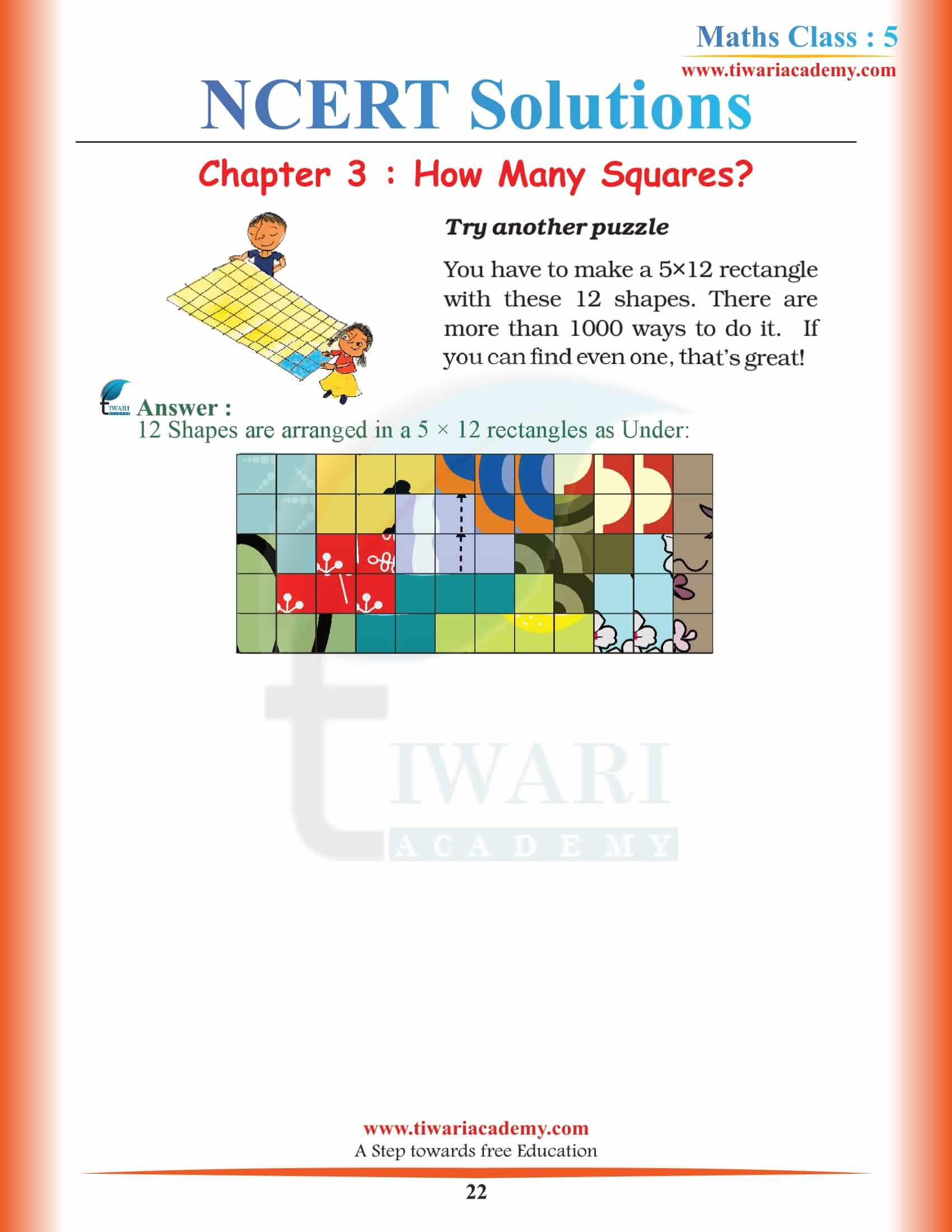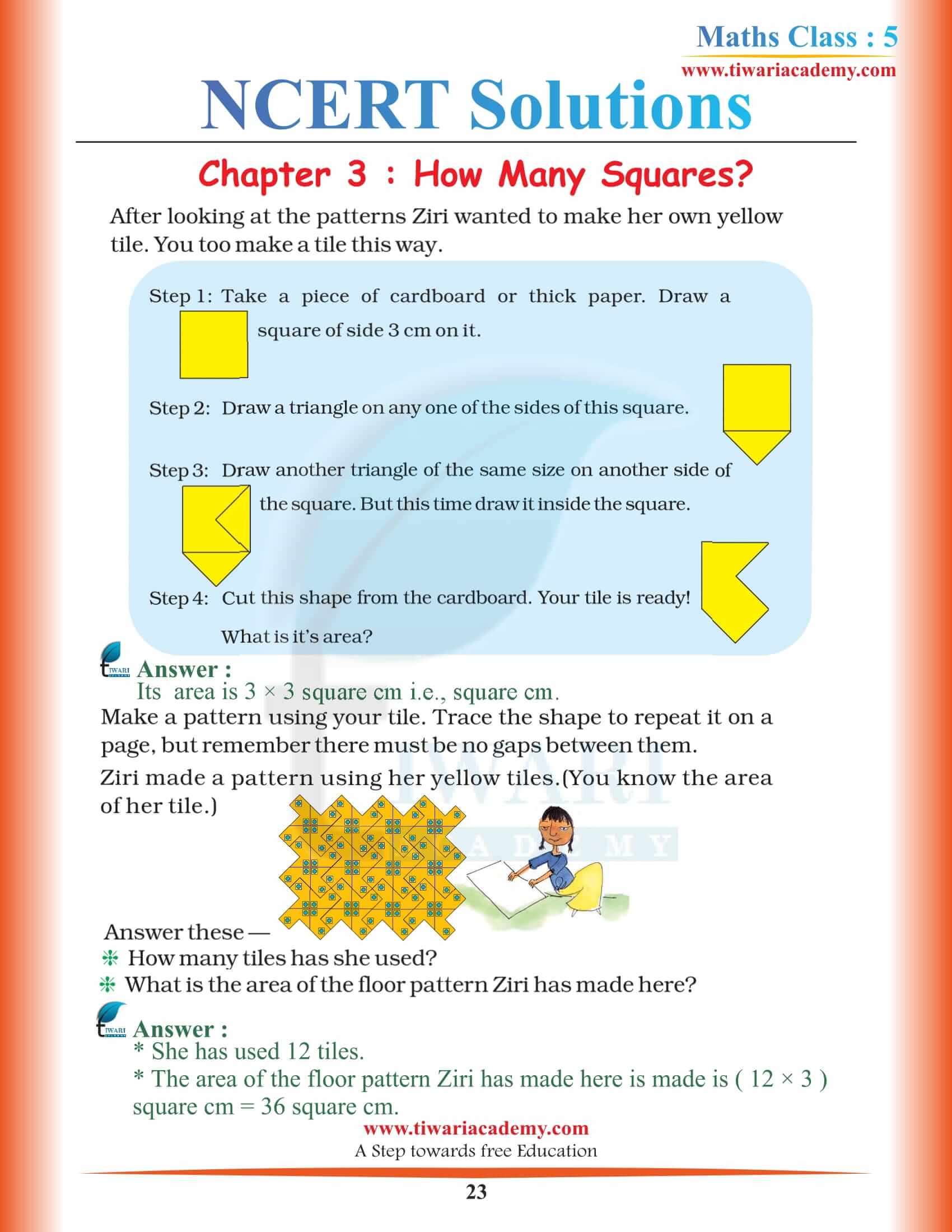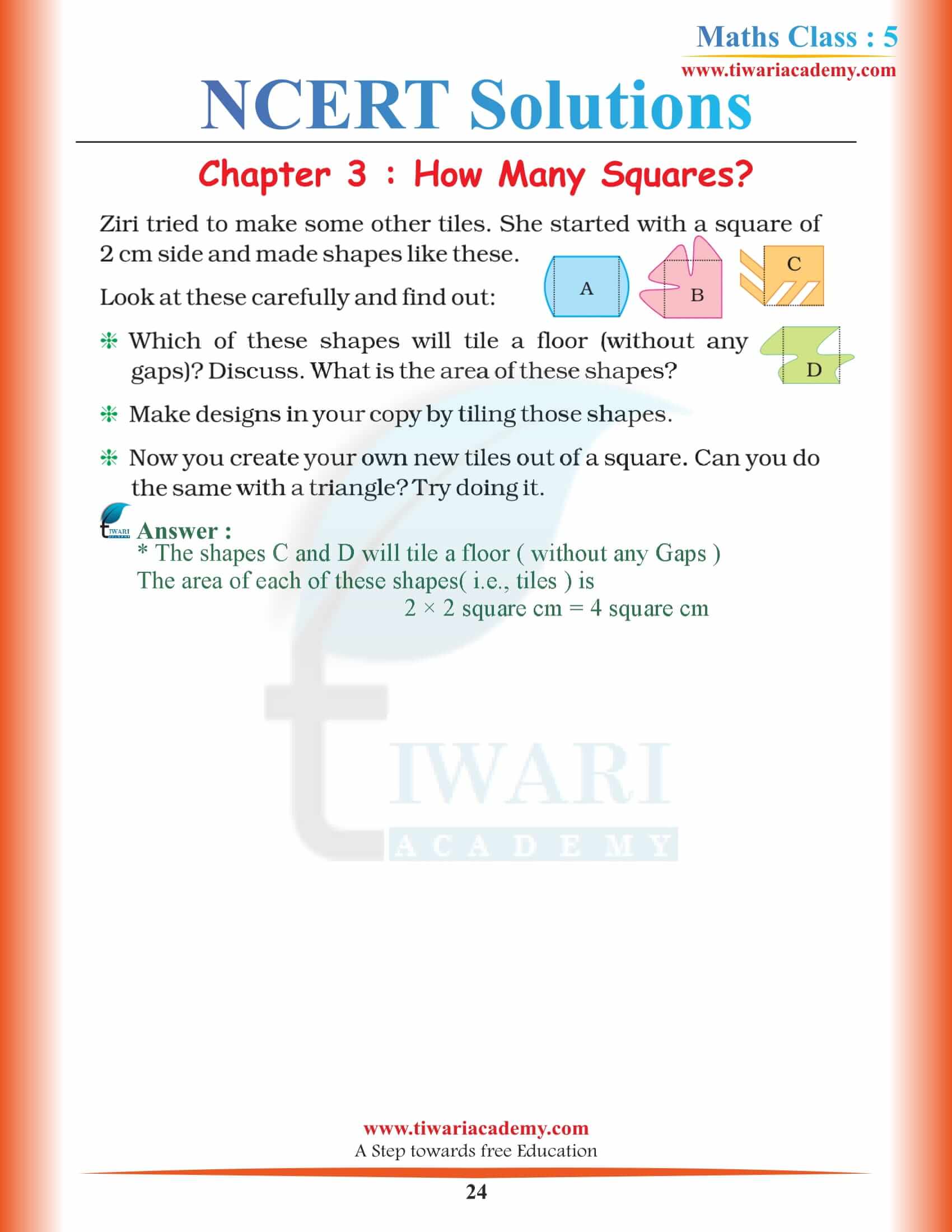NCERT Solutions for Class 5 Maths Chapter 3 How Many Squares? Math-Magic in English and Hindi Medium based on latest CBSE Syllabus 2025-26. In Chapter 3 of 5th Mathematics, you will have references to rectangles, including which rectangle has the longest perimeter, how many rectangles can be made from the given points, and so on. Several problem exercises and solutions are given in the chapter 3 of Grade 5 Maths.
Study Plan to Score well in Class 5 Maths
NCERT Solutions for Class 5 Maths Chapter 3 How Many Squares
NCERT Solutions for Class 5 Maths Chapter 3
Class 5 NCERT Maths Chapter 3 Summary
The name of the chapter might have given you an idea of what the chapter is all about. The chapter is mainly focused on measurement and tracing the shapes interactively. Once you started the chapter you will get some questions about the first activity that is given in the chapter and while working over you won’t feel that math is difficult at all the basic reason behind it is that you have understood the basics and how the things work in this chapter.
5th Standard NCERT Maths Chapter 3 How to Solve Problems
As you start to move forward you will realize new things are being introduced to you and to understand in better way I suggest you may take help from your teacher and or parents who so ever is available at that point because once you stuck with one problem for which you are finding difficult to clear you might feel the Maths is not for you but the situation is different.
CBSE Class 5 NCERT Maths Book Chapter 3 Use of Graph paper
In the chapter previously you might have studied the length of hand and size accordingly you will get those things in this chapter too. So you know how to do it but at the same time there is another thing that is given the way you measure your hands not just horizontally or vertically it is the way you measure it with the help of grid lines. Grid lines are already drawn on paper or graph paper.
Class 5 NCERT Maths Textbook Chapter 3 Maths is Tough or Fun
So all of you have to follow the steps given in the chapter and measure it and see if you have done it the right way, you will get the answer soon and your perception towards Maths is being difficult is going to change that Maths being fun. One example is given only for one topic and the rest of the similar activities are also there for you to complete.
5th Maths Chapter 3 Shape of Footprints
The interesting part in this chapter for me is to recognize the footprints. Now you can recognize your and my footprints but what about the other footprints and maybe animal footprints too. Well, this is the tricky part of the chapter if you see the chapter and you will find the topic you can imagine what I am talking about.
Class 5 NCERT Maths Chapter 3 Activity
Do you have a pet whether it is a mouse, cat, or dog? if yes, then try to measure their footprints, and if you are animal friendly then try to measure the footprints of other animals on the grid line paper and then try to recognize the footprints of your animal among all the footprints. Now, this part is challenging you to see. That is how chapter 3 will work out for you,
What are the grid lines work in Chapter 3 of class 5 Maths mean?
In unit 3 of class 5th Maths, one will understand the usefulness of grid line work in mathematics to draw shapes. Students will learn about tracing the shapes in order to use them for works.
Do you find chapter 3 of class 5th creative for students of Maths?
The work with the grid lines is very useful to understand the shapes and draw various artwork too. This means even creative students can acquire knowledge from Maths chapters. Given the fact this chapter was made creatively means it is much easier to cover comparing the upcoming chapter.
Do you think the students of class 5th Maths will cover chapter 3 in a short time?
The chapter doesn’t have much of the calculations and then it is made about the shapes. Students of class 5th Maths have studied about the shapes in previous class too. This makes the chapter even easier for them to cover in a short time but we have to consider the fact that there are other students too who might not have the same understanding level.
